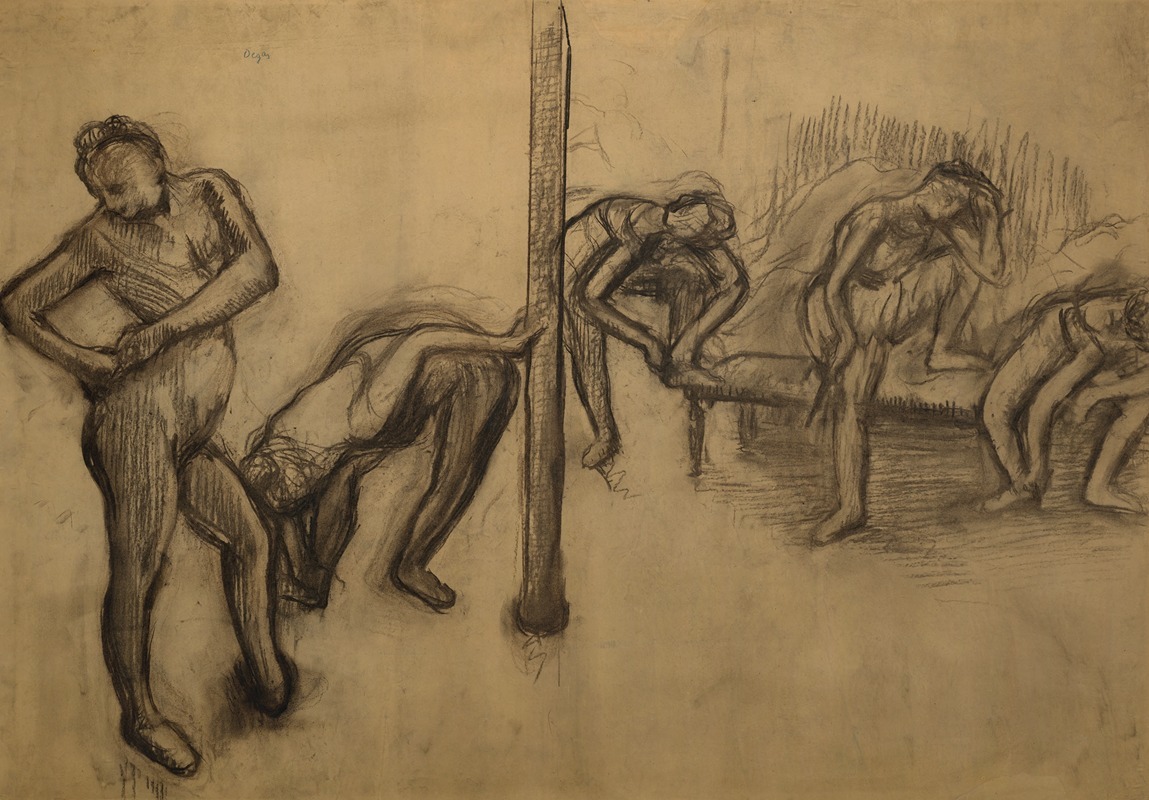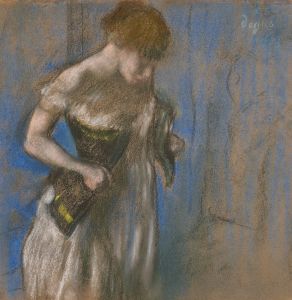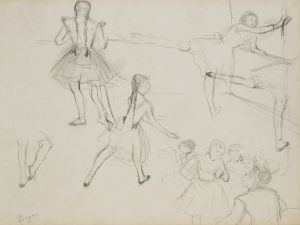
Danseuses en maillot, au repos
A hand-painted replica of Edgar Degas’s masterpiece Danseuses en maillot, au repos, meticulously crafted by professional artists to capture the true essence of the original. Each piece is created with museum-quality canvas and rare mineral pigments, carefully painted by experienced artists with delicate brushstrokes and rich, layered colors to perfectly recreate the texture of the original artwork. Unlike machine-printed reproductions, this hand-painted version brings the painting to life, infused with the artist’s emotions and skill in every stroke. Whether for personal collection or home decoration, it instantly elevates the artistic atmosphere of any space.
"Danseuses en maillot, au repos" (Dancers in Leotards, at Rest) is a painting by the renowned French artist Edgar Degas, who is widely celebrated for his depictions of ballet dancers. This particular work exemplifies Degas's fascination with the world of ballet and his innovative approach to capturing movement and the human form.
Edgar Degas was born on July 19, 1834, in Paris, France, and became one of the leading figures of the Impressionist movement, although he preferred to be called a Realist or Independent. His works often focused on dancers, women at their toilette, and scenes of Parisian life. Degas's interest in ballet dancers began in the early 1870s and continued throughout his career, resulting in numerous paintings, pastels, drawings, and sculptures.
"Danseuses en maillot, au repos" is believed to have been created around 1882-1885. The painting depicts a group of ballet dancers in a moment of rest, dressed in their practice attire, which includes leotards. The composition captures the dancers in various poses, some seated and others standing, conveying a sense of relaxation and informality. This contrasts with the more formal and idealized representations of dancers on stage.
Degas's technique in this painting showcases his mastery of capturing the subtleties of human posture and movement. He employs a muted color palette, with soft tones that emphasize the naturalism of the scene. The use of light and shadow adds depth and dimension to the figures, highlighting their musculature and the texture of their clothing. Degas's brushwork is both precise and expressive, allowing him to convey the delicate balance between the dancers' physicality and their moments of repose.
One of the notable aspects of Degas's work is his unconventional compositions. In "Danseuses en maillot, au repos," he employs a cropped framing, which gives the viewer a sense of an intimate, behind-the-scenes glimpse into the dancers' world. This approach was influenced by Degas's interest in photography and Japanese prints, both of which often featured unusual perspectives and asymmetrical compositions.
Degas's focus on the everyday moments of ballet dancers' lives was groundbreaking at the time. Rather than idealizing his subjects, he presented them as real individuals, capturing their fatigue, concentration, and the physical demands of their art. This realistic portrayal resonated with contemporary audiences and contributed to Degas's reputation as a keen observer of modern life.
"Danseuses en maillot, au repos" is part of the collection of the Musée d'Orsay in Paris, which houses an extensive collection of Degas's works. The museum's collection provides a comprehensive overview of Degas's artistic development and his contributions to the Impressionist movement.
In summary, "Danseuses en maillot, au repos" is a significant work by Edgar Degas that exemplifies his innovative approach to depicting ballet dancers. Through his masterful technique and unconventional compositions, Degas offers a realistic and intimate portrayal of the dancers' world, capturing both their grace and their humanity.


















